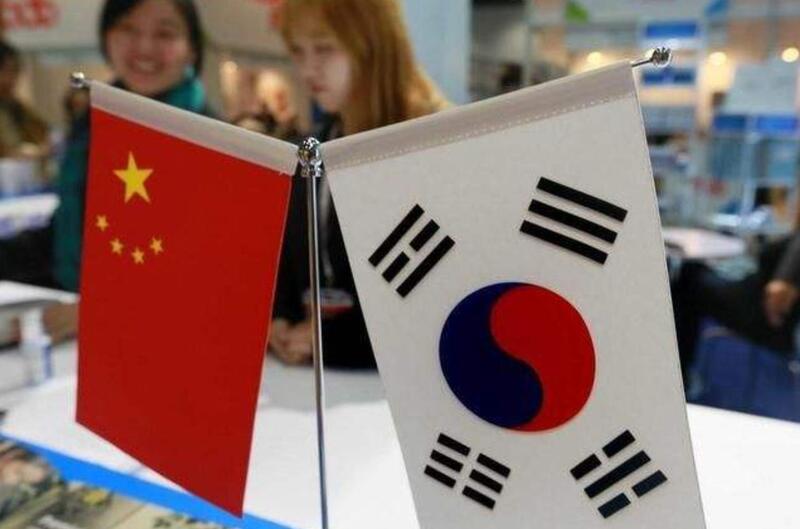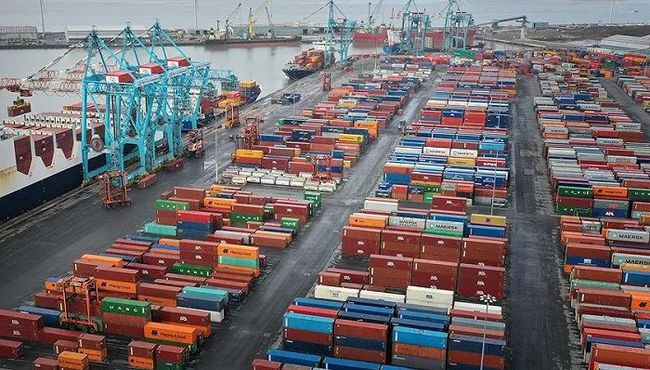In 2022, China imported $238.09 billion of goods from South Korea, accounting for 8.8% of China's total imports that year, and South Korea maintained its position as the top source country for China's imports. In that year, South Korea exported $155.79 billion in goods to China, according to Korean statistics. The trade surplus with China is an important support for South Korea's economic development, and has also boosted the two countries' economic and industrial development and strengthened bilateral economic and trade ties over the past decades. Despite the discrepancy with China Customs, China remains the largest export destination for South Korea according to Korean data, with exports to China accounting for 22.8 percent of South Korea's total exports, 6.7 percentage points higher than the U.S., which comes in second place. China and South Korea, with their long historical ties and close industrial chain and supply chain relations, have realized a good complementarity of their respective resource advantages through complementary trade relations.
Electronic information products are an important component of South Korea's manufacturing exports, and South Korea is one of the world's leading exporters of electronic products to major markets such as the U.S., China, and the European Union.In 2022, South Korea's information and communication technology (ICT) merchandise exports reached $233 billion, up 2.5% year-on-year, and accounted for more than one-third (34.1%) of South Korea's total merchandise exports. However, under the impact of cyclical fluctuations in ICT products, coupled with the impact of the United States and other countries on the ICT supply chain through restrictive trade measures, rising raw material supply costs, and fragmentation of the demand market, South Korea's key export strengths in commodities such as memory chips have suffered a considerable impact.
However, Korea still has strong global advantages in electronic products such as semiconductors and displays, as well as automotive vehicles and auto parts. Industrial and technological scale effect, strong technological innovation ability, leading resource integration and allocation ability, so that South Korea's exports are still expected to remain strong. Trade with China is a priority area for many Korean companies, and exports to China involve not only final consumer goods, but also a wide range of trade in which Korean invested companies in China have developed a competitive advantage through internal trade in their multinational networks.

Looking at the structure of South Korea's merchandise exports in 2022, among the two broad categories (AG2) of goods with high shares of customs codes for exports to China, ore and mineral ores (HS26) accounted for the highest share at 90.7 percent, followed by photographic and cinematographic products (HS37) at 78 percent. Those accounting for 40% to 49.9% were copper (HS74) 49.4%, salt and sulfur (HS25) 49.3%, organic chemicals (HS29) 45.8%, glass and glass products (HS70) 45.4%, essential oils and resins (HS33) 44.6%, and optical or medical equipment (HS90) 40.8%, respectively.
In contrast, there are still many categories of goods that account for a relatively small share of exports to China, and there is little room for expanding imports. For example, man-made staple fibers (HS55) as textile raw materials accounted for 9.9%, cotton (HS52) accounted for 7.5%, and silk (HS50) accounted for 6%. Given the huge size of China's textile and apparel market, increasing the number of imported suppliers of raw materials is an important step for the industry to stabilize and remain competitive. China's share of South Korea's pharmaceutical (HS30) exports is only 3%, and it also imports only 1.5% of South Korea's coffee and tea (HS9). China and South Korea have a lot of cultural similarities, South Korea has its own advantages and characteristics in these two types of goods, expanding imports of related goods can provide Chinese consumers with more diversified choices.
The China-Korea FTA, as a comprehensive, high-level and largely balanced bilateral agreement, covers 17 areas, including trade in goods, trade in services, investment and rules. Both sides have liberalized more than 90 percent of tax items and 85 percent of trade volume in trade in goods. Currently, the two countries are in the second phase of negotiations on trade in services and investment market access based on the pre-access national treatment and negative list model. Along with the formal entry into force of the Regional Comprehensive Economic Partnership Agreement (RCEP), the supply chain within the China-Korea region will be further adjusted and optimized. Maintaining and expanding the scale of goods imported from South Korea is also a concrete manifestation of effective use of the trade agreement.

South Korea's Ministry of Industry, Trade and Resources data show that South Korea's exports fell 8.4% year-on-year in August, becoming the 11th consecutive month of year-on-year decline, and its downward cycle is only second in history to the 14 consecutive months of decline from December 2018 to January 2022, with weak demand for semiconductors and pessimistic market expectations being the main reasons. However, South Korean semiconductor manufacturers such as Samsung Electronics and SK Hynix, after obtaining the U.S. Department of Commerce's "Validated End-User Authorization List (VEU)", the process and uncertainty of semiconductor exports to China have been reduced. Moreover, in order to get rid of the export trend, South Korea in September introduced "revitalization of exports of additional support programs", efforts to promote diversification of export varieties and regions, and strengthen infrastructure. South Korea to speed up the construction of system chips and other manufacturers gathered in the Yongin Semiconductor National Industrial Park, and actively promote the pre-feasibility study of a new generation of battery R & D projects, and efforts to develop exports of electric vehicles in emerging markets. Events such as the China-Korea Economic Ministers' Meeting and the Economic Cooperation Exchange Meeting will also create conditions for the two countries to coordinate and strengthen their supply chains and expand trade opportunities.

